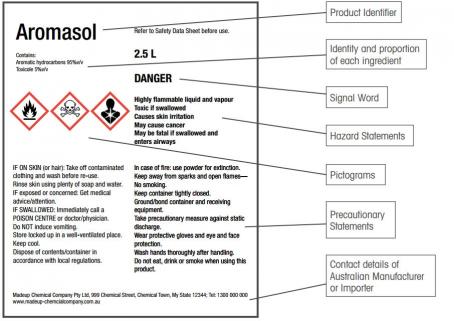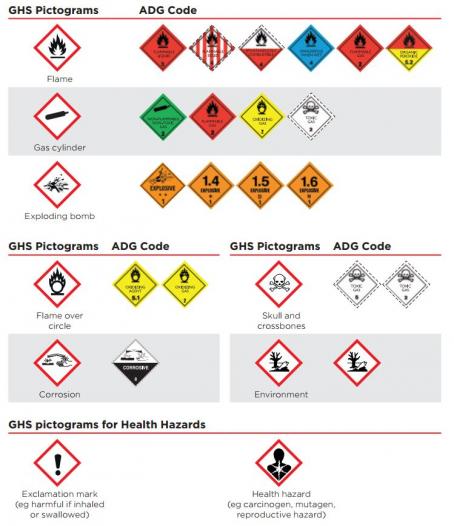The GHS is a system used to classify and communicate chemical hazards using internationally consistent terms and information on chemical labels and safety data sheets. The system was developed by the United Nations with the intention of harmonising the many different chemical classification systems in use around the world.
The GHS provides criteria for the classification of physical hazards (e.g. flammable liquids), health hazards (e.g. carcinogens) and environmental hazards (e.g. aquatic toxicity).
Special labelling situations
Pesticide and veterinary medicine labels (other than some Schedule 4 and Schedule 8 veterinary medicines) are also introducing GHS based information.
It is important to note that pesticides and veterinary medicines in Australia go through a rigorous risk assessment process and are registered via the Australian Pesticides and Veterinary Medicines Authority (APVMA) before they can be used. All necessary information and controls to reduce risks to workers, the public, industry and the environment are included on the label.
The GHS labelling system, now included on labels in relation to hazards, is hazard based – that is, hazard information is included on the label whether the hazard has been addressed under the APVMA’s risk assessment process or not.
Hazard based labelling systems have been used for other workplace chemicals and included on safety data sheets for pesticides and veterinary medicines for many years.
If the existing risk based phrase is similar to the hazard based phrase the change may only include the addition of a hazard statement. For example, the warning on a herbicide label may change from:

This change of approach means you see more safety and health warnings on some new pesticide and veterinary medicine labels (including warnings about chronic health hazards such as cancer); however it doesn’t mean that the pesticide or veterinary medicine is more hazardous than previously thought. GHS hazard phrases relate to hazards to the user of the chemical product as supplied, rather than to consumers of end products such as food crops or animals. Any hazards to consumers are considered as part of the APVMA’s risk assessment.
Consumer products and therapeutic goods require labelling under the Poisons Standard and the Therapeutic Goods Act 1989. Chemicals which are used in workplaces in quantities and ways that are consistent with household use, and are used in a way that is incidental to the work that is being carried out, do not need to be labelled in accordance with the GHS.
Therapeutic goods are exempt from workplace labelling when in a form and package intended for intake or administration to a patient or consumers, or intended for use for therapeutic purposes.
Veterinary medicines that are labelled in accordance with the Australian Pesticides and Veterinary Medicines Authority and are listed in either Schedule 8 or Schedule 4 (in the form and packaging consistent with direct administration to animals) are exempt from the labelling requirements of the GHS.
Further information
- Using the GHS, Safe Work Australia
- Classifying hazardous chemicals – national guide, Safe Work Australia
- Globally Harmonized System of classification and labelling of chemicals (GHS)
- National Transport Commission (NTC), for further information on Australian Dangerous Goods Code (ADG Code) requirements
- Preparation of safety data sheets for hazardous chemicals: Code of practice
- Labelling of workplace hazardous chemicals: Code of practice




